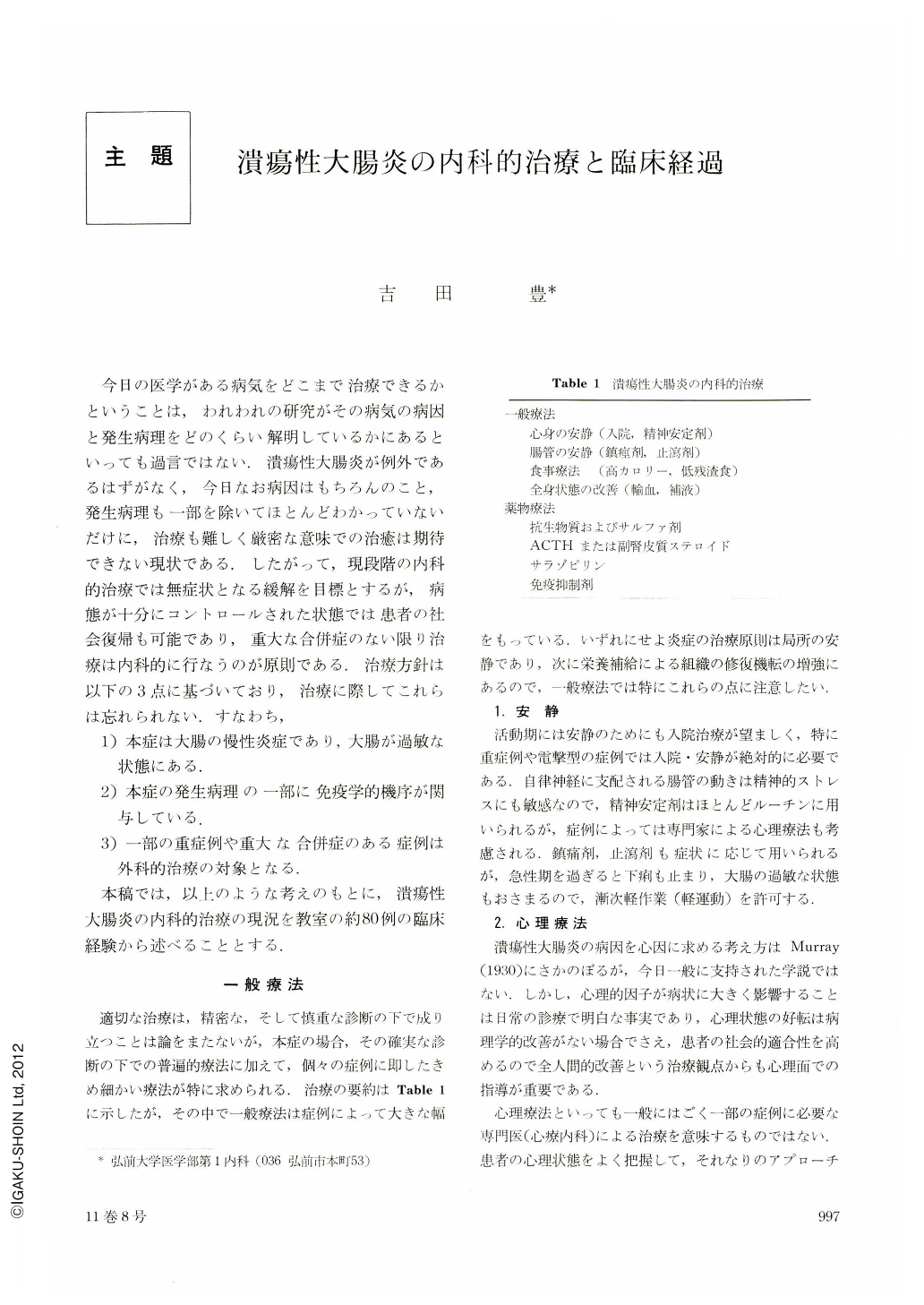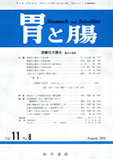Japanese
English
- 有料閲覧
- Abstract 文献概要
- 1ページ目 Look Inside
今日の医学がある病気をどこまで治療できるかということは,われわれの研究がその病気の病因と発生病理をどのくらい解明しているかにあるといっても過言ではない.潰瘍性大腸炎が例外であるはずがなく,今日なお病因はもちろんのこと,発生病理も一部を除いてほとんどわかっていないだけに,治療も難しく厳密な意味での治癒は期待できない現状である.したがって,現段階の内科的治療では無症状となる緩解を目標とするが,病態が十分にコントロールされた状態では患者の社会復帰も可能であり,重大な合併症のない限り治療は内科的に行なうのが原則である.治療方針は以下の3点に基づいており,治療に際してこれらは忘れられない.すなわち,
1)本症は大腸の慢性炎症であり,大腸が過敏な状態にある.
The management of this chronic colitis is perhaps one of the most difficult in medicine, for both the etiology and the pathogenesis are still not known and the clinical course is varied and unpredictable. Physicians are reminded the following three facts on reating the patients; 1) The disorder is a chronic inflammation and the affected colon is much irritated. 2) Immunological process is playing a roll in the pathogenesis. 3) Approximately 20% of the patients will be ultimately treated surgically.
The method of medical treatment was discussed and described from the author's clinical experience with some 80 patients.
General Measures
Hospitalization is recommended when the onset is acute and fulminant for both the physical and emotional rest. In a few patients psychotherapy may be needed, and in many others autogenic training is recommended to prevent the relapse. For patients with active diarrhea a low-residue diet without spices and milk should be given, although caloric intake and vitamin supplement must be always sufficient, through the intravenous route if necessary.
Chemotherapeutic Measures
In patients with mild or moderate colitis Salazopyrin is the drug of first choice, which seems more effective when given rectally to those with proctosigmoiditis. In severe colitis a relatively large dosis of prednisolone (40~60 mg/day) with anti-biotics is routinely administered. ACTH in a form of i. v. drip infusion may be added in case of no improvement. In acute fulminant colitis no oral intake is allowed, and all medications as well as all nutritions are given parenterally. Hypoproteinemia and anemia which are usually present should be corrected with infusions of albumin and/or whole blood. A massive i. v. prodnisolone and antibiotics are given also, and if no definite improvement is seen within a week surgical treatment is urgent.
The clinical course should be followed not only by checking the appearance and number of stools but also by seeing other tests such as sed rate, WBC counts, serum α2-globulin and lysozyme activity in stool, all of which fall in the normal range in 4~8 weeks if the therapy is effective; 86.2% of the patients recovered complete remission, 10.3% had surgical operation, and 3.5% was fatal in the author's series. Immunosuppressive therapy should be considered only when the above regimen are all failed.
In conclusion it was emphasized that a curative medical treatment will be established only when the etiology and the pathogenesis are fully understood.

Copyright © 1976, Igaku-Shoin Ltd. All rights reserved.


